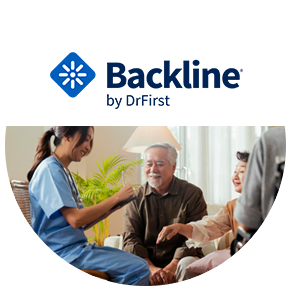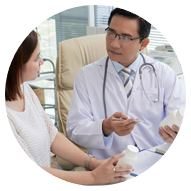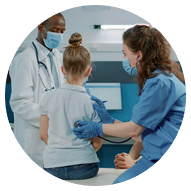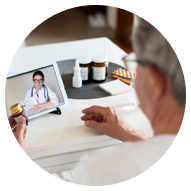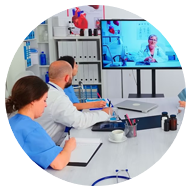Healthcare Connected…At Last
Backline by DrFirst is an industry-leading communications ecosystem that empowers forward-thinking healthcare organizations to deliver exceptional care to patients anywhere.
Increase ROI
Deliver Care to Patients Anywhere
Streamline Workflows

Healthcare doesn't have
to be disconnected
- Today, care needs to meet the patient where they are, including outside of your four walls.
- Healthcare has invested billions in electronic charting and collaboration tools – only to be more siloed.
- Eliminating communication gaps is still a top priority for executives and clinical teams.
Why  ?
?
Healthcare is our only business.
DrFirst is committed to innovation and has a proven track record of results for our clients.
10+ years
enabling
HIPAA-compliant
communication
1,500 +
facilities
using our
solutions
18,000 +
active
cross-org
connections
95% of our clients
are satisfied and would recommend us to others
Frost & Sullivan awards
for innovation and leadership in technology
Getting Started is Easy
01.
Book a discovery call where we review your needs, goals, and timeline.
02.
We agree on the scope of your project.
03.
We work with you to ensure successful results now and into the future.
Backline helped increase provider-to-nurse communication and enable quicker responses.
- Angela Clark
Clinical Informaticist
Catawba Valley Medical Center
With Backline, we improved communication across departments.
- Richard Temple
CIO
Deborah Heart & Lung Center
Backline facilitated swifter responses and enhanced provider-to-nurse communication.
- Mark Doe
CIO
New York Medical Center
We spend a lot of money on cancer and heart disease, but we have not even recognized that medical error is the third leading cause of death in the United States.
— Dr. Martin Makary of John Hopkins University
But the right information at the right time supports the right healthcare decisions and outcomes.
Reduce errors in transitions of care
Consolidate tech stack and increase ROI
Increase patient engagement and improve outcomes
Improve staff satisfaction and decrease burden
Accelerate throughput times and streamline workflows
Connect your ecosystem ...at last
Subscribe to our list
Stay connected with us and receive the latest news and information about our platform.

